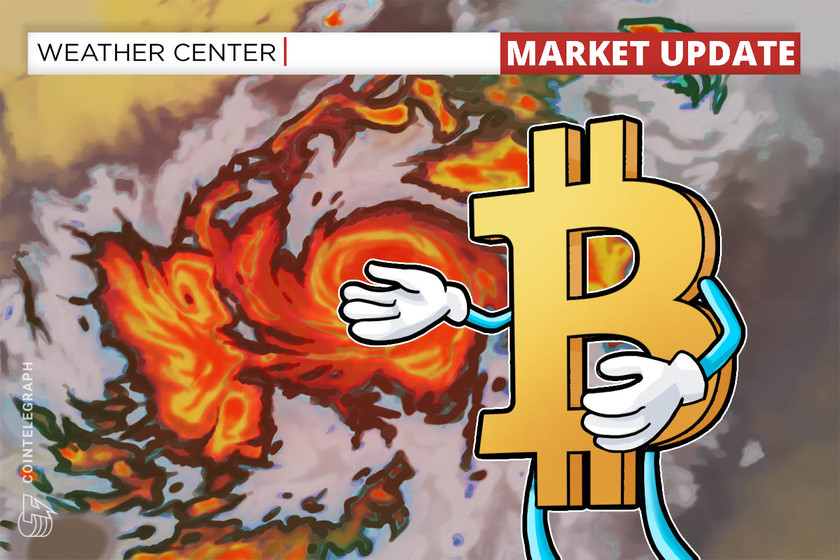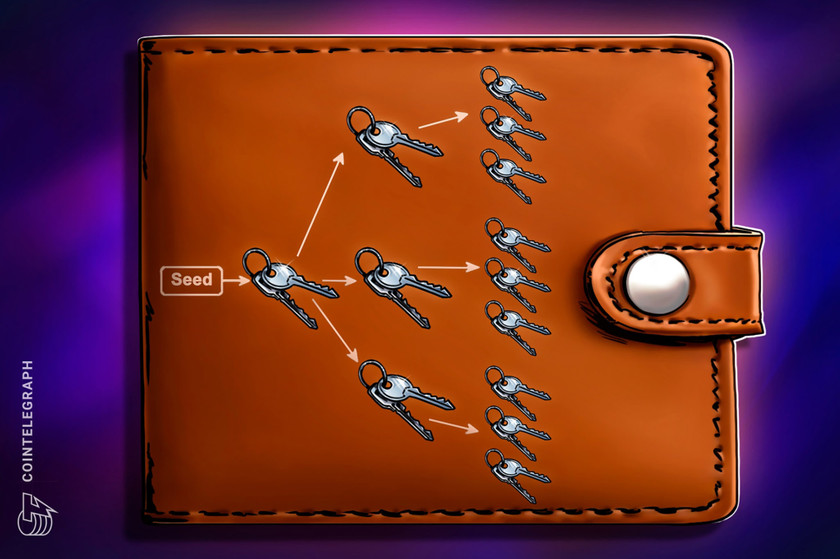Some central banks have dropped out of the digital currency race
As countries around the world race to launch a central bank digital currency (CBDC), some jurisdictions have slowed down or dropped out of the race altogether.
While many observers were pushing a narrative of urgency around CBDCs, some countries have decided that launching a CBDC isn’t currently necessary, while others have tested CBDCs only to dismiss them.
Each country had its own reasons, with global central banks providing very different insights on why their CBDC-related project didn’t go well or didn’t need to launch in the first place.
Cointelegraph has picked up four countries that have either stopped or paused their CBDC or CBDC-like initiatives based on publicly available data.
Denmark
Denmark is one of the top European countries in terms of digital payments, as its population relies on cash far less than other European nations.
The Nordic country was also one of the earliest countries to explore the possibility of issuing a CBDC, with the Danish central bank expressing interest in issuing a digital currency in 2016. The Danmarks Nationalbank then started working on digitizing the local fiat currency and the possible introduction of a Danish digital krone.
After only a year of research, the Danish central bank dismissed the idea of launching a CBDC, ruling that it would do little to improve the country’s financial infrastructure. The regulator argued that Denmark already had a “secure and effective” payments infrastructure in place, which provided instant payment options.
“It is not clear how retail CBDCs will create significant added value relative to the existing solutions in Denmark,” the Danmarks Nationalbank stated in a CBDC-related report in June 2022.
The central bank referred to associated costs and possible risks, also pointing out potential difficulties for the private sector. The bank still continues to monitor global CBDC development has not completely ruled out a CBDC in the future.
Japan
Japan is the third wealthiest economy after the United States and China, and also is the third largest pension market in the world.
The Japanese central bank — the Bank of Japan (BOJ) — released its initial report on CBDC development in October 2020 and subsequently started testing its digital currency proof-of-concept in early 2021, planning to finish the first pilot phase by March 2022.
Related: Buying Bitcoin ‘will quickly vanish’ when CBDCs launch — Arthur Hayes
However, in January, former BOJ official Hiromi Yamaoka advised against using the digital yen as part of the country’s monetary policy, citing risks to financial stability.
In July 2022, the bank issued a report in which it claimed it had no plan to issue a CBDC, the “strong preference for cash and high ratio of bank account holding in Japan.” The regulator also emphasized that a CBDC, as a public good, “must complement and coexist” with private payment services in order for Japan to achieve secure and efficient payment and settlement systems.
“Nevertheless, the fact that CBDC is being seriously considered as a realistic future option in many countries must be taken seriously,” the report noted.
Ecuador
Ecuador’s central bank, Banco Central del Ecuador (BCE), officially announced its own electronic currency known as dinero electrónico (DE) back in 2014. Key drivers of the DE program were increasing financial inclusion and reducing the need for the central bank to hold and distribute large amounts of fiat currency.
As of February 2015, Ecuador managed to adopt DE as a functional means of payment, allowing qualified users to transfer money via a mobile app. The application specifically allowed citizens to open an account using a national identity number and then deposit or withdraw money via designated transaction centers.
While Ecuador’s DE is widely referred to as a CBDC, some industry observers have questioned whether it was really a CBDC because it was based on the United States dollar instead of a sovereign national fiat currency. The Ecuadorian government cited the support of its dollar-based monetary system as one of the goals behind its DE platform after it started to accept U.S. dollars as legal tender in September 2000.
According to online reports, Ecuador’s DE operated from 2014 to 2018, amassing a total of 500,000 users at its peak out of a population of roughly 17 million people. The project was eventually deactivated in March 2018, with the BCE reportedly citing legislation abolishing the central bank’s electronic money system. Passed in December 2021, the law stated that e-payment systems should be outsourced to private banks.
Years after dropping its central bank digital money initiative, Ecuador has apparently remained skeptical about the whole CBDC phenomenon. In August 2022, Andrés Arauz, the former general director at Ecuador’s central bank, warned eurozone policymakers that a digital euro could potentially disrupt not only privacy but also democracy.
Finland
For those who think that the Bahamas and China were the first countries in the world to roll out a CBDC, the Bank of Finland has some news.
In 2020, the central bank of Finland issued a report titled “Lessons learned from the world’s first CBDC,” providing a description of its Avant smart card system, which it created back in the 1990s. The Bank of Finland argued that Avant is not only the project that “can be considered the world’s first CBDC” but also was the “only one” that went into production at the time.
Following years of research, the Bank of Finland launched its Avant project in 1993. The project involved smart cards similar to that used in debit and credit cards today. According to various sources, Avant cards preceded the attempts to create current CBDCs.

“A key difference between Avant and the CBDC systems being designed today is that for modern CBDC systems cards would probably be an additional feature. In Avant, cards were the main component,” the Bank of Finland noted in the report. The bank also suggested that the project essentially represented a “token-based retail CBDC,” based on the current CBDC terminology.
Avant became obsolete and was eventually discontinued in 2006 because it became more expensive than simple debit cards, according to the Bank of Finland. The Avant card was initially cost-free for consumers, but fees were later added, which naturally affected the demand for the card in a negative way, the bank noted. In the meantime, debit cards were progressing, adding smart card technology and becoming less expensive for consumers.
Despite higher fees, the Avant card had some non-obvious benefits compared to debit cards. According to the Bank of Finland, Avant allowed consumers to pay anonymously as it offered a possibility to avoid creating or using a bank account at all.
Related: Singapore’s MAS says no urgent case for retail CBDC, but launches 4 fast trials of it
After dropping its own CBDC-related project years ago, Finland appears to support a pan-European digital currency. In August 2022, Bank of Finland governor Olli Rehn promoted the adoption of a digital euro functioning in tandem with private fintech solutions to conduct cross-border payments in Europe.
The whole world is now keeping an eye on CBDCs and no country is ignoring the new financial phenomena — even those who have already set aside their own CBDC plans. While it’s still to be seen how various CBDCs will actually play out, it’s also important to draw lessons from past experiences, with many central banks stressing the importance of coexistence between CBDCs and the private financial sector.









